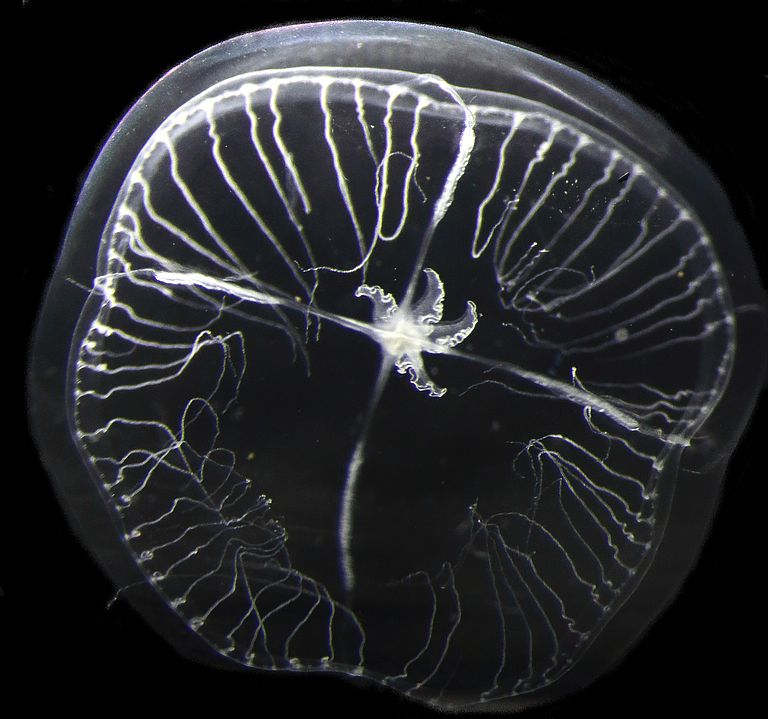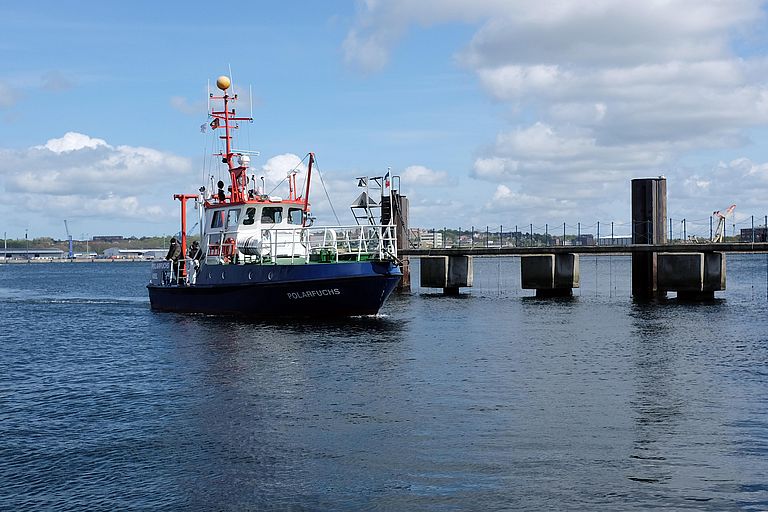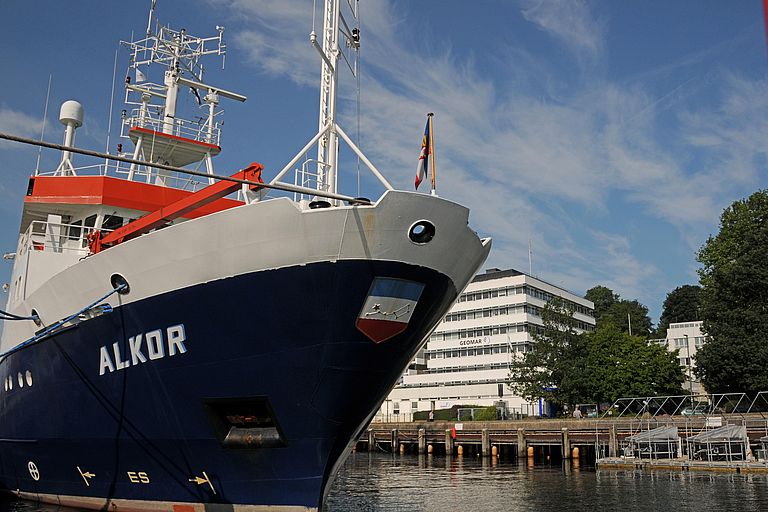New jellyfish species in the Kiel Canal
Further spread of Blackfordia virginica into the Baltic Sea is likely
Global studies show that the number of species migrating into foreign ecosystems is constantly increasing. Not all of these species are able to establish themselves in the new environments. However, successful bio-invaders have the potential to cause major changes in their new ecosystems. Also in the Baltic Sea, numerous foreign species have been identified over the past decades. A prominent example is the American comb jellyfish Mnemiopsis leidyi, also called sea walnut.
Scientists from the GEOMAR Helmholtz Centre for Ocean Research Kiel, the Technical University of Denmark (DTU Aqua) and the Kiel University have now discovered another new jellyfish species in this region by evaluating data from regular monitoring cruises in the Kiel Canal and in the Baltic Sea. The Latin name of the species is Blackfordia virginica.
"Our long-term data show that this jellyfish has been established in the Kiel Canal with active recruitment since summer 2016. It is forming a new component of the ecosystem," says Dr. Cornelia Jaspers, who works as a biological oceanographer at GEOMAR and the DTU National Institute for Aquatic Resources in Lyngby (Denmark).
The species Blackfordia virginica was first described scientifically in the waters off the US state of Virginia in 1904. Later studies suggest, however, that it originates from the Black Sea. "In the meantime it can also be found in India, South America and South Africa. Since the 1970s it has been found in brackish waters in northern France and since the 1980s also in Portugal," explains Dr. Jaspers, "so here we have a species with a long successful history as invader of foreign ecosystems, that can reach very high population densities there.”
No direct evidence exists on how the jellyfish got into the Kiel Canal. However, since the canal is the busiest artificial waterway in the world, ships are the most likely culprit. As ballast water is not allowed to be pumped out in the canal, the jellyfish probably has arrived as polyps on ship hulls that have released young jellyfish, so-called Ephyres, into the water.
The scientists were also able to detect specimens outside the canal, in the Kiel Fjord. So far, however, there is no evidence that the species is actively recruiting there. “In our study we show that the brackish waters of the Baltic Sea are an ideal habitat for Blackfordia virginica. We therefore expect a further spread of the species," says Dr. Jaspers.
What consequences this could have for the Baltic Sea is still unclear. From other regions it is known that Blackfordia virginica is a considerable competitor to other organisms feeding on plankton. The jellyfish can also affect the offspring of fish as their larvae are among Blackfordia’s prey. This could ultimately have economic consequences.
The study was supported by students of the Kiel Master's programme "Biological Oceanography", who fished and inspected several thousand cubic metres of water from Flensburg to Finland during their educational cruise with the research vessel ALKOR in August 2017.
"Overall, the discovery shows the importance of regular monitoring of species composition in coastal waters, as these areas are particularly exposed to strong anthropogenic influences. Especially the gelatinous plankton, i.e. jellyfish, must be considered even more than before," emphasizes Dr. Jaspers.
Reference:
Jaspers, C., B. Huwer, N. Weiland-Bräuer, C. Clemmesen (2018): First record of the non-indigenous jellyfish Blackfordia virginica (Mayer, 1910) in the Baltic Sea. Helgoland Marine Research, https://doi.org/10.1186/s10152-018-0513-7
High-res images:
A specimen of Blackfordia virginica. Photo: Cornelia Jaspers/GEOMAR, DTU Aqua (CC BY 4.0)
Additional data were supplied by monitoring and training cruises in the Baltic Sea with RV ALKOR. Photo: Maike Nicolai/GEOMAR (CC BY 4.0)
Contact:
Jan Steffen (GEOMAR, Communication and Media), Tel.:+49 0431 600-2811, presse(at)geomar.de





